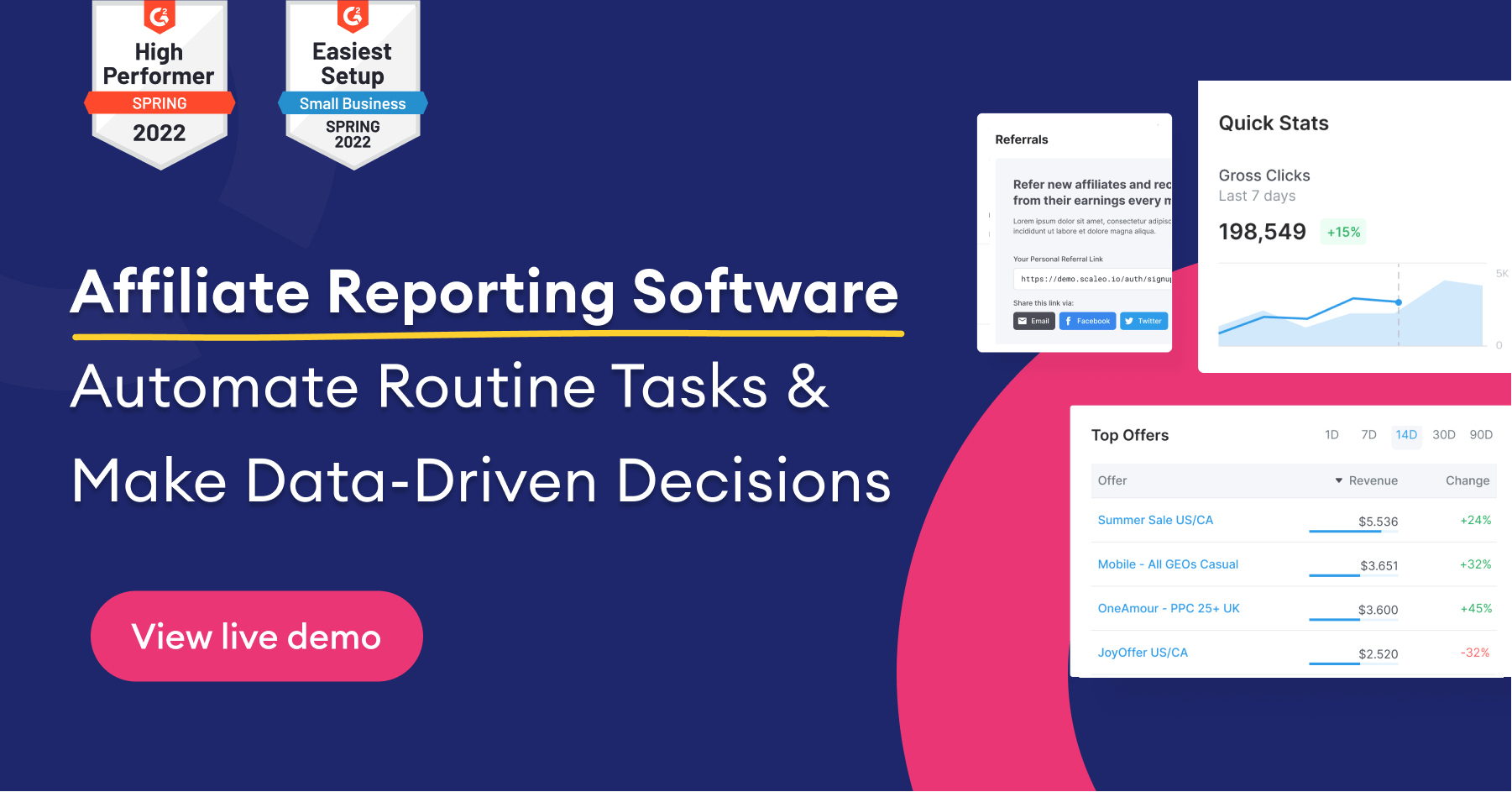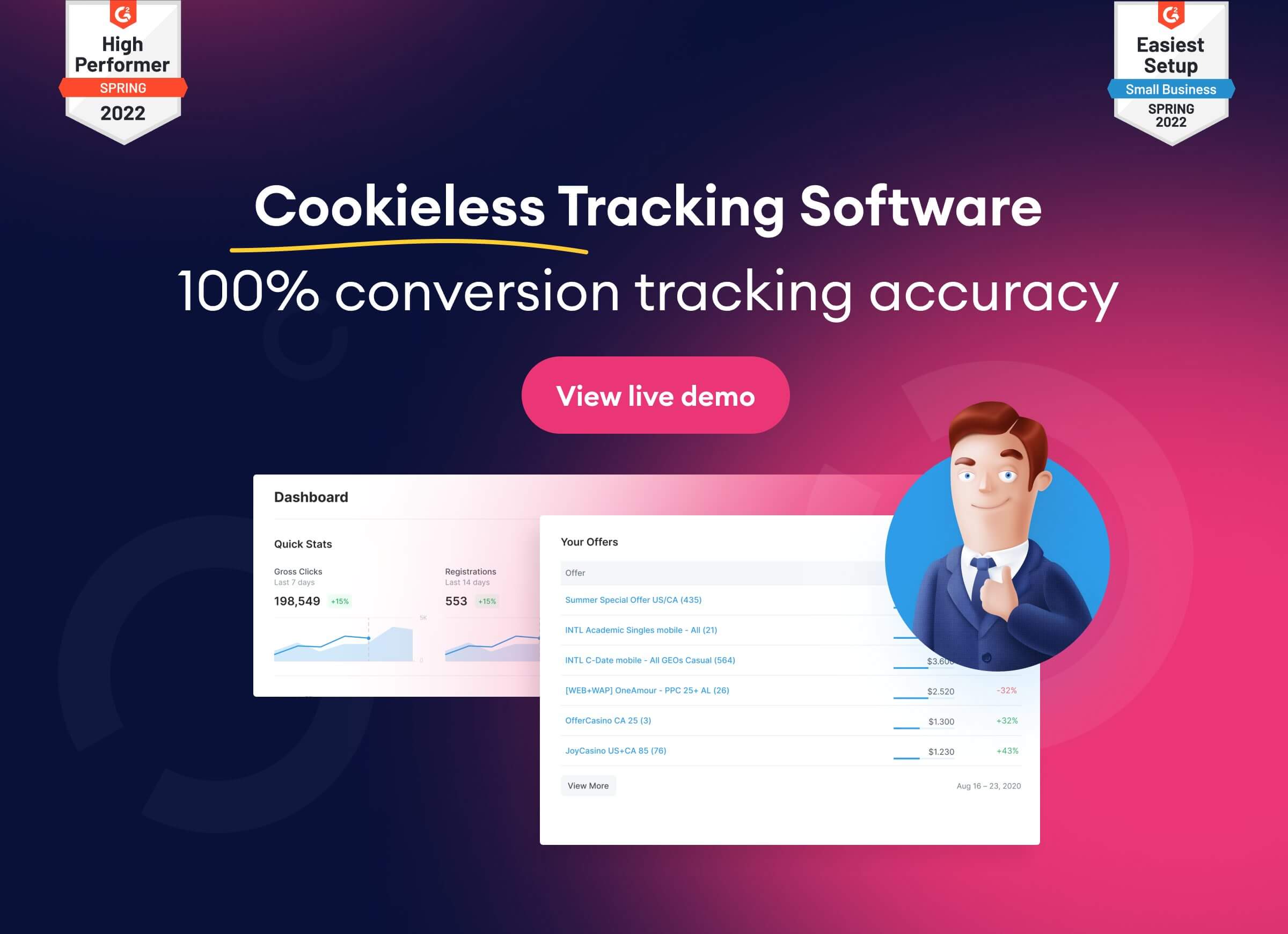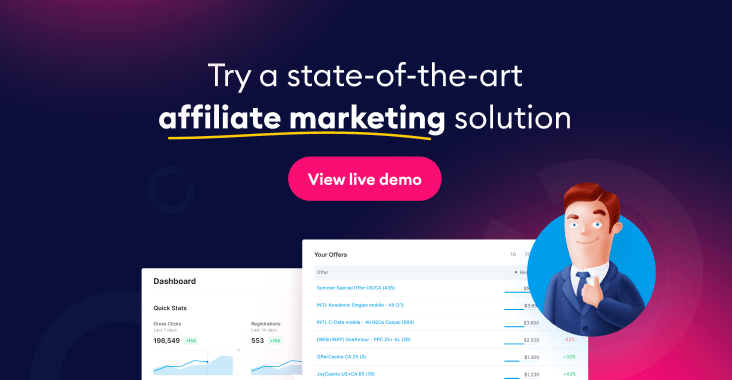Partner channel marketing – what do you already know, what can you learn to improve your business? Times have changed, and today’s generation of buyers is wary of traditional advertising. Companies need to find new strategies to grow their business and attract new customers as marketing evolves. This is where the creation of a channel partner marketing program comes into play.
Apple and Google; GoPro and Red Bull: brands around the world are already making a splash with brand partnerships.

Read on to learn how inbound marketing can help you partner with brands and grow your channel partners.
What Does a Channel Partner Marketing Program Entail?
A channel partner marketing program is a commercial technique involving two companies forming an alliance. Partners are encouraged to market the other company’s products, services, or innovations while staying autonomous.
A successful partner program provides the following advantages:
Increased Revenue:Partner programs provide a win-win situation for all involved. Businesses that participate in partner programs see a significant increase in product or service sales.Build Trust: Having your brand sponsored by a well-known and trustworthy partner in your sector helps boost your brand’s visibility. Your alliance with them will naturally increase the credibility and trustworthiness of your goods in the eyes of your customers.Expanded Network:Each unique collaboration establishes its own relationship. When a brand joins forces with another firm, they join forces with that company’s users and partners, expanding its network as a result.Rapid Testing:Channel partner programs allow you to try out new consumer demographics, promotions, products, and marketing campaigns in a low-risk setting.
So, how might inbound marketing assist you in creating a channel partner program and attracting excellent participants? This article will teach you the following:
- Key mindsets required for inbound marketers to create a successful partner program
- Which actions should you take while developing your channel strategy?
- How to employ inbound marketing methods to promote your program.
- What to look for when calculating the ROI of your partner program.
Let’s get this party started.
Map Your Channel Marketing
While the benefits are obviously lucrative, some may say it’s easier said than done.
But, don’t worry, you don’t need to get out of your way to get started; all you need to do is map the process and follow along.
Similar to how direct marketing targets different buyer personas, channel marketing must target a variety of decision-makers.
The distinction is that these decision-makers may be associated with one or more businesses comprising your distribution channel. It is critical to map them for effective communication.
Be sure to identify the following, before you get started:
Points for channel marketing
In the most basic scenario, channel marketers only need to target partners directly. Still, there is often a distributor they must first convince and convert in order to gain access to selling partners. Furthermore, the distributor is frequently the gatekeeper, governing all future communications with their partners. In many cases, vendor communications are not only screened but also “pay to play,” creating roadblocks to partner engagement.
Once connected with a partner, gaining mind-share may be difficult because it requires communication with various stakeholders, such as owners and sellers.
Roles
Identify your partner types. Then, make sure that your communications include some role-based communication. The messaging that persuades an owner to join as a partner may not be the same messaging that persuades sales reps to introduce your solutions to their customers.
Points for marketing distribution
Selling through partners to end customers is, at best, two steps, but it can be more if distributors are involved. This marketing motion is complicated because channel marketers frequently need to pair through-channel campaigns with to-channel messaging about objectives, promotions, and sales incentives.
Establishing these critical communication and experience points helps with content strategy and prepares you to measure the right outcomes from the right activities. We track partner enrollment and engagement for channel marketing activities. We track leads, opportunities, and bookings to channel market-through efforts.
Types of partners
Your channel program will not be a cohesive unit. Referring to affiliate partners versus selling partners is a classic example. At the very least, their “hot buttons” differ: one wants to throw leads passively over the fence, while the other wants to sell your solution actively. In a more complex example from the tech world, there may be many different types of partners, such as sales agents, value-added resellers, white-label resellers, systems integrations, and managed services providers.
You can all sell your solution for different reasons, with different compensation models and responsibilities before and after the sale, including installation, billing, and customer support. In this case, both recruitment and marketing materials must be tailored to each go-to-market strategy.
Specialization
Your partner may have experience in health care, finance, or other industries. Alternatively, they may concentrate on multinational corporations or small and medium-sized businesses. Use their specialties to your advantage by tailoring your messaging to vertical or horizontal needs. Even if your partners or solutions are more broadly focused, tailored marketing can help you achieve better results.
Customizing campaign language, use cases, and product positioning for a specific vertical or company size can make your marketing more relatable, resulting in increased engagement and, ultimately, more conversions for you and your partners.
Tips for a Successful Channel Partner Marketing Program
Put yourself in your channel partners’ shoes.
Your channel partner aims to provide clients with a comprehensive solution to their difficulties. This entails having product or service information easily available so that they may do their duties efficiently.
What educational assistance would you provide to your representatives in order for them to successfully advertise your product?
Be easy to do business with
Ask yourself:
- Is your partner’s marketing program easy to follow?
- Is it easy to gain access to pricing, information, and technical support?
Meet with your partner reps and ask them how they intend to engage with your organization to acquire answers to these questions. Make sure that your content is easily accessible, actionable, and available on demand.
Get to know your own sales process.
Before you can educate others on how to advertise your product, you must first learn how to sell it.
Define the key stages of your buyer’s journey, the average length of a closed sale, and your clients’ buying triggers before beginning your partner program.
Understand your value proposition
Partners want to work with companies whose services provide long-term financial benefits.
How will your product or service assist other firms in meeting their objectives, lowering their cost per sale, and increasing revenue?
So.. how to outline your channel strategy?
Choose the Type of Channel Partner to Work with
There are a few things to think about when selecting networking partners.
To begin with, why are you developing a channel partner marketing program? What are your objectives? It is critical to have well-defined goals when selecting a spouse.
Take into account the following factors:
- Their market: Consider whether their customer base might benefit from your product or service before selecting a partner. Is their target audience a good fit in terms of demographics and size? Is your product able to deliver extra features and solutions that your partner is unable to supply at this time?
- Strategic alignment: The business plan of your partner must be compatible with yours. There should be a natural moment in their sales process when they can promote your product or service.
- Marketing experience: What marketing experience and skills does your partner have? Depending on their level of experience, you may need to invest time and resources in training them before you collaborate.
- Synergic product lines: Do their product lines work well with yours? Will you allow your partner to offer other products, or will you only sell yours?
Define Which Products You Want to Sell
To create the ideal partner program, you must first pick which product or service you will advertise. Here are questions to ask yourself before choosing the best product:
- Which product complements the present services of the potential partner and produces more revenue for them? Examine what is going on in your market.
- What kind of product is already popular in your industry? When developing a relationship with a potential partner, make sure to emphasize all of the advantages of the product you’re offering.
- Which product will help your partner’s customer base the most?
- Which goods do you advertise that is most relevant to your partner’s current audience?
- How can you meet the needs of their current consumers while also gaining new business for their company?
- What level of skill is required for each product?
To ensure that your partners quickly become acquainted with your product, it may be best to sell products that are simple to understand. If promoting a product necessitates extensive training and comprehension, it may be best to let it go.
Choose an Operating Model for Your Program
There are numerous operational models from which to choose depending on your channel partner’s program goals. Here are the four primary types of thinking:
- VAR (Value-Added Reseller): A business that buys a product, adds value by adding new features to the original product, and then sells the new offering to its customer base.
- ISV (Independent Software Vendor): A company that creates and sells software solutions. Salesforce and HubSpot Connect are two examples of this.
- Strategic Alliance: Is an agreement between 2 or more companies to pursue a common set of goals while remaining autonomous.
- System Integrators: Businesses that buy individual hardware and software components from various vendors and combine them into a single customized solution for the client.
Uber’s strategic alliance with Spotify is an excellent illustration of a successful operating strategy. How does it function? While waiting for their Uber journey, consumers can log in to Spotify and select whatever playlist they want to listen to during the trip.
Both companies benefit from the approach because it improves the user experience and attracts more people. (Source).
After you’ve finished building your program, you’ll need to start looking for possible partners—but don’t skip the research and planning stage.
Need assistance creating a partner channel program that corresponds with your company objectives? Please contact us.
Scaleo is a strategic partner marketing software that can assist you in developing a program tailored to your specific needs.

Do you already have a channel partner program in place? Then it’s time to move on and begin marketing it!
Inbound marketing tactics are the most effective technique to recruit new channel partners. Crafting valuable, relevant material for your audience while leveraging social media can raise awareness for your program, resulting in the recruitment of new partners.
Top Inbound Channel Partner Marketing Strategies for More Potential Partners.
Before reaching out on social media, create personas for your ideal match. Partner personas let you choose whether people are worth partnering with.
Now that you’ve developed your partner persona, it’s time to reach out to possible mates. Make sure you can properly explain how your solution can help them obtain new customers, increase revenue, and diversify their offerings.
Before starting to reach out to potential partners on social media, ask yourself the following questions:
- How would working with you assist their company?
- How can your items assist them in expanding their business and consumer base?
- What advantages do your product or service providers have that your competitors do not?
You can utilize social media to start a relationship with possible partners before reaching out to them. This can involve things like following their blog posts, enjoying or sharing them, and leaving smart comments whenever feasible.
Webinars
Education-based webinars deliver information that helps the audience answer a need or problem.
Webinars are an excellent way to attract new channel partners while also establishing your credibility in the industry. The capacity to contact many individuals worldwide at once with no overhead is a big benefit of webinars.
Do you need a webinar topic? Why not incorporate success stories from partners and customers? This might demonstrate how your product has benefited a consumer while also supporting your partner in income generation.
Newsletters
A monthly message highlighting feature enhancements and recent client success is an excellent method to entice partners to join your channel network. Newsletters allow you to show off your company’s personality, customize your message to existing clients, and drive traffic to your partner program’s landing page.
eBooks
People are increasingly reading books on their iPads and smartphones. An eBook published on your website is an excellent approach to advertising your channel partner program.
Self-published eBooks, which may be developed and distributed for free, allow you to showcase your authority on a subject for a longer period of time than a standard blog post. Here are some ideas for promoting your eBook:
- Add the eBook up to your corporate blog.
- Make it a point to promote it on your social media platforms.
- Send it to folks who have subscribed to your newsletter.
- Send it as a free gift with the customer’s purchase.
Case Studies
Case studies emphasize a customer’s requirement or problem and illustrate how your company solved it. This gives potential partners a sneak peek into how your channel partner program might benefit them. Successful case studies typically have the following elements:
- Challenges + How You Contributed: Case studies include detailed information on the obstacles and problems that your clients had, as well as how your partner program solved them. Including what the customer has tried in the past, as well as what sets your product apart from the competition.
- Client Quotes: Quotes from clients who have used your product or service are frequently included in case studies. Client testimonials provide social proof to your partners, indicating that they are making the proper decision.
- Measurable Stats: Nothing beats numbers when it comes to persuasion. Make sure to include relevant statistics in your study to demonstrate the effectiveness of your program.
- Call-To-Action (CTA): Finish your case study with a few phrases about your product or service. The final paragraph should entice partners to call your company or enroll in your program.
Email Marketing
Email marketing is a popular method for strengthening a brand’s engagement with current/previous clients or acquiring new customers. It can also be utilized to reach out to specific people in your business in order to raise awareness about your channel partner program. Email marketing must be effective if the following criteria are met:
- Valuable: Partners aren’t interested in your firm or program; they want to hear how you can help them solve their problems. Concentrate on sharing relevant content that will resonate with them.
- Relevant: Make sure your database has been segmented based on demographics and activity to guarantee you’re sending the correct message to the right person at the right time.
- Expected: Maintain regular communication to ensure that your email is expected. Analyze your subscribers’ behavior and send your pitch when they are most likely to expect it.
- Email marketing: works best when it is integrated with the rest of your marketing efforts. When it comes to getting statistics on how well your email marketing initiatives are going, integrating email with other data technologies is ideal.
Partner Marketing Best Practices
Now that you have identified partner roles and better understand how your business will operate using the partner marketing channel, it’s time to dive into the best B2B practices that will help you build a successful, long-term strategy for your partner program.
Here are a few channels you can leverage in order to maximize your brand’s exposure as well as draw the attention of potential partners in your niche.
According to a recent study, partner referrals account for 52% of professional service businesses. You can even identify clients with a large network and ask for referrals. Nothing generates more customers than constant supply referrals. Systematically cultivate and refer people.
Build Awareness
A search-optimized website can boost search authority, but having a presence in your region to build word-of-mouth and referrals is more important. Attend or sponsor networking events. Consider placing an ad with a local or regional journal. Write news and press releases aggressively and distribute them to local, regional, and national editor lists. Make use of both free and paid news distribution services. Investigate and look for speaking opportunities at relevant events. It should be noted that the longer the planning cycle, the larger the event. Be present, and be everywhere.
Read our blog post: Tips for Creating a Successful Referral Program
Analysis and Planning
Take a step back and conduct some research before you begin marketing. Determine sales and profit for each market segment, product, or service. Determine potential areas for expansion. Examine the marketing, websites, products, and services of your competitors. Seek objective advice from an expert. The marketing plan should outline the timing of marketing initiatives throughout the year and estimated costs. To manage marketing, use a spreadsheet or a calendar.
Leverage Vendor Support
Hardware and software vendors typically have far more marketing resources than channel partners, from brochure templates to websites, emails, and case studies, to content for these applications. Vendors frequently sponsor webcasts and product demonstrations in which channel partners can take part. Finally, vendors and publishers may provide co-op and market development funds (MDF) to channel partners to reimburse them for approved marketing initiatives.
Social Media
Marketing’s hottest topic is social media. Why? Because it can increase search authority while also generating leads! How? Create profiles on LinkedIn, including personal and company pages, a Facebook business page, a Twitter profile, a YouTube channel and Google Places. Make sure your website and blog include social profile icons and links. Integrate social sharing tools (Facebook Like, Twitter Retweet, Bookmarks) to both your website and blog.
Direct Marketing
All marketing aims to generate leads. So use a customer database, marketing automation software, or contact manager to manage it. Leads should be coded, tracked, and reported. Connect the database to your website’s registration pages and email campaigns. Conduct ongoing research on potential leads and contacts. Obtain prospect lists from publishers or trade associations. To identify decision makers and contact information, use telemarketing qualifications.
Search Engine Optimization (SEO)
The foundation of your marketing program is your website. A website that is more than three years old may be out of date (mobile version?). Is the site ranked in the top three search results for specific keywords? To identify issues and problems, use search engine optimization diagnostics such as SEOmoz.
What are your traffic statistics? Examine Google Analytics. What about the content and the images? Is there compelling content on the site, such as case studies and events? Do the graphics present a professional image in which customers can put their trust? Is lead generation optimized with offers and registration pages? If vendors allow it, consider a paid search (Pay-Per-Click).
Content
Make yourself a subject matter expert (SME) or thought leader in your field. How? Create case studies, white papers, eBooks, surveys, industry studies, videos, and other materials. Make use of and repurpose the content for your website, blog, and social media. When submitting proposals, include content for your credentials kit. Search for and curate content from other publishers, bloggers, and editors (with credit).
Blogging
A blog is a tool for distributing all of your content. Blogging has numerous advantages for a marketing program, including superior search engine optimization (SEO). Blogs work with your website and social media to create indexed pages and distribute content via bookmarking and social sharing. WordPress, for example, has powerful search optimization features, widgets, and plug-ins.
Podcasts and Live Events
Create regular webcast events on relevant topics. Determine relevant vendor events. Promote and communicate events through email, public relations, and social media channels. Participate in and sponsor local and vertical marketing, networking, and trade show events. List upcoming events on your homepage and create an events page with archives on your website.
Measure Your Channel Partner Program ROI
Do you want to know how successful you are? Here are the key metrics to consider when calculating your return on investment (ROI):
Channel Sales Recruitment Metrics
- Total Partner Count: How many partners have you been able to recruit in the last month or quarter?
- Attainment of Recruitment Quotas: How far or close are you to meeting your recruitment objectives?
- The Cost of Recruiting New Partners: How much money do you need to invest in acquiring new partners?
- Percentage of Partners Attracted Through a Channel: For example, webinars generate 45% of revenue, email marketing generates 30%, and referrals generate 25%.
Channel Sales Success Metrics
- Average Revenue Generated Per Partner: The first step in enhancing your sales engagement is to track the revenue generated by your partners.
- Average Partner Contentment: Monitoring your partner’s satisfaction is a solid indicator that your product is working.
- % of Partners Who Completed the Training: What % of your partners completed the training you provided?
- Sales Cycle Length on Average: How long does it take your sales representatives to close a sale?
Channel Sales Profitability Metrics
- Channel Retention Rate: Keeping track of the percentage of people who have ceased selling your items is critical for staying on top of the situation.
- Program Expense to Money: How much revenue do you generate overall relative to the cost of your program?
- Average Profit Margin: How much profit do you make on average from the sale of your product?
- Partner Multi Tier Revenue Growth Rate: This demonstrates how partners are expanding across various product lines and can assist you in making effective resource allocation decisions.
Conclusion
Inbound channel partner marketing is a type of marketing strategy that focuses on attracting potential partners to a business, rather than actively seeking out partnerships. This can be done through a variety of methods, such as creating engaging content, offering valuable resources and tools, and building strong relationships with potential partners.
The goal of inbound channel partner marketing is to make it easy for potential partners to discover and learn about a business, and to encourage them to enter into a partnership with the company.
Today you learned how to get started with inbound marketing to grow your channel partner marketing program. Are you ready to dominate your channel partner marketing campaign?
Using the techniques described above, you can create a working partner program that excites your team, attracts top-notch partners, and sets you apart from the competition.

Need help building your channel partner program or adding an affiliate partner program? Then contact us! We will work with you to maximize the effectiveness of these marketing methods and develop a partner marketing program that will get you more business and sales.
What is Channel Partner Marketing?
Partner channel marketing is a strategy that businesses use to attract and retain partners who can help them grow and expand their reach. This type of marketing focuses on building strong relationships with potential partners and providing them with the resources and tools they need to succeed.
What are the benefits of channel partner marketing?
One of the key benefits of partner channel marketing is that it allows businesses to tap into new markets and reach new customers. By partnering with other companies, businesses can access new networks of customers and expand their customer base. This can be especially valuable for businesses that are looking to enter new markets or expand their operations into new regions.
Another benefit of partner channel marketing is that it can help businesses increase their revenue and profitability. Partners can help businesses increase their sales by promoting their products and services to their own networks of customers. This can lead to increased sales and revenue for both the business and its partners.
What do you need to be successful in channel partner marketing?
In order to be successful with partner channel marketing, businesses need to have a clear strategy in place. This should include identifying potential partners, building strong relationships with them, and providing them with the tools and resources they need to succeed.
What do B2B businesses need to start partner channel marketing?
An important aspect of partner channel marketing is creating engaging content that will attract potential partners. This can include blog posts, videos, and other forms of content that provide valuable information and insights to potential partners.
By creating content that is informative and useful, businesses can make it easy for potential partners to learn about their products and services, and to see the value in partnering with them.
In addition to creating engaging content, businesses also need to offer valuable resources and tools to their partners. This can include training materials, marketing collateral, and other resources that will help partners promote and sell the business’s products and services. By providing these resources, businesses can help their partners succeed, which in turn can lead to increased sales and revenue for the business.
Ultimately, partner channel marketing is all about building strong relationships with potential partners. By providing valuable resources and engaging content, businesses can attract and retain partners who can help them grow and expand their reach. This can lead to increased sales, revenue, and profitability for the business, and can help the business tap into new markets and reach new customers.
Last Updated on April 10, 2024





